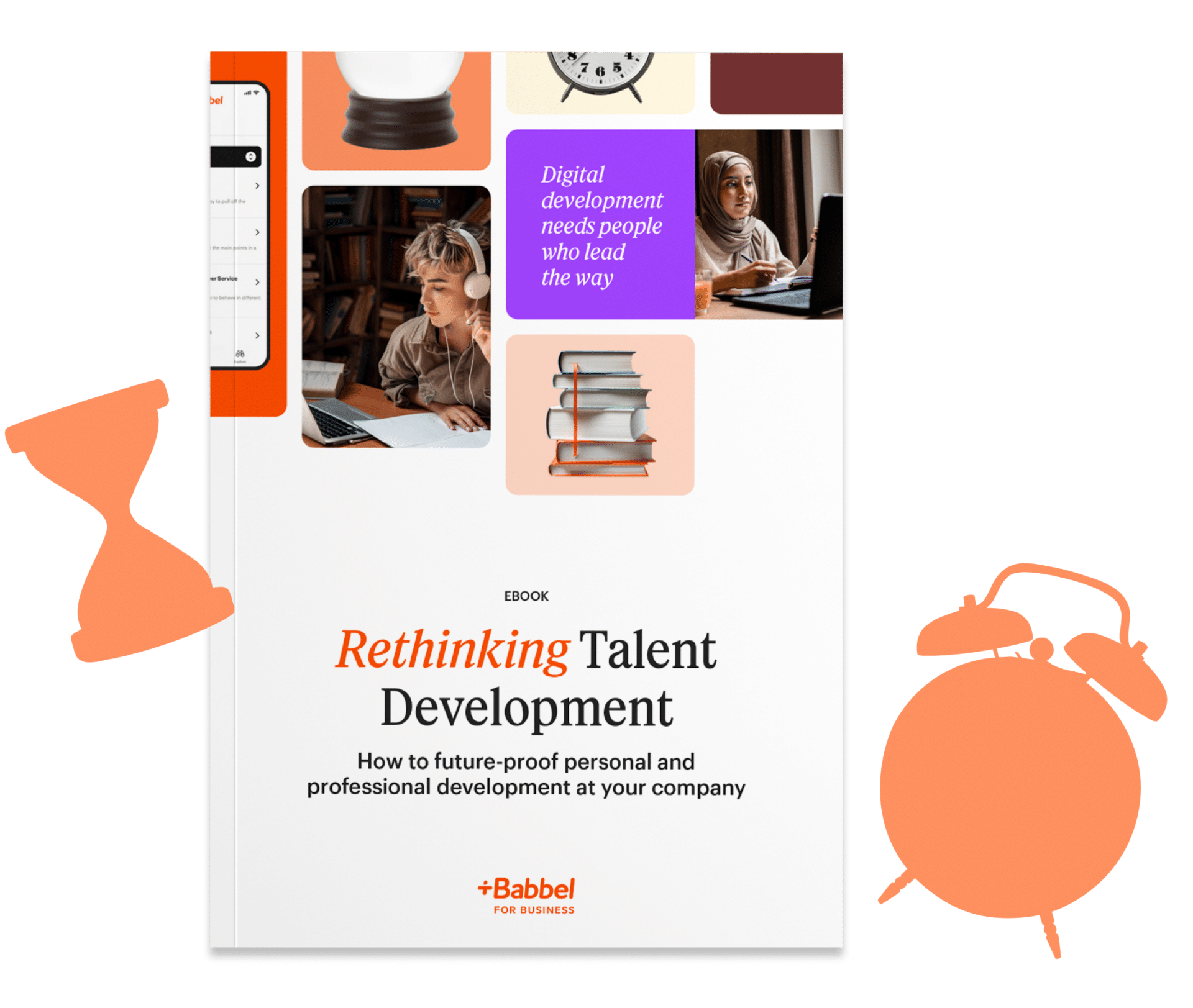In this post, we review the state of recruiting today. We outline the five key trends shaping the hiring landscape and explore what candidates want from the recruiting process.
The recruiting industry is dynamic to say the least. For the last few years, hiring managers and recruiters have found themselves grappling with a tumultuous labor market, impacted by trends such as the Great Resignation, quiet quitting, and the ongoing war for talent.
Then there’s the rise of remote work, ever-widening skills gaps, and the acceleration of AI. Recruiters have lots to contend with!
So what is the state of recruiting in 2023? What trends and predictions are actually sticking and making an impact? Let’s take a look.
Table of Contents
- The state of recruiting in 2023 (and why the candidate experience is key)
- The 5 biggest recruiting trends in 2023 so far
- Harnessing the top recruiting trends for a more effective recruitment process

How to attract and retain talent?
To survive in today’s competitive recruitment market, companies must have a compelling Employer Value Proposition (EVP) that attracts and retains staff by understanding their needs. In this eBook, we’ll help you take a fresh look at your EVP, so you can meet the needs and expectations of job seekers, and retain talent across your business.
The state of recruiting in 2023 (and why the candidate experience is key)
You’ve heard of employee experience (EX) — the end-to-end experience an employee has while working at your company. But what about the experience people have when applying for a job and going through the recruiting process?
This is known as the candidate experience, and it has a major impact on your chances of recruiting and hiring top talent.
According to CareerPlug’s 2023 Candidate Experience Report, 49% of jobseekers have declined an offer because of a poor candidate experience. At the same time, 81% of candidates said that a positive candidate experience influenced their decision to accept a job offer.
On the flip side, 90% of recruiting and hiring leaders are not meeting at least one of their hiring and recruiting goals, according to Findem and KarmaCheck’s 2023 State of Hiring and Recruiting Report, with inefficient hiring processes cited as the biggest barrier.
In fact, 71% of recruiting and hiring leaders are missing out on key hires due to inefficient hiring processes, with 53% blaming interview scheduling issues, 42% blaming slow screening and evaluation, and 34% blaming inefficient communications.
A clunky recruiting process results in a subpar candidate experience — and neither are conducive to meeting your hiring goals. Employers must optimize both. And, fortunately, that’s exactly what we’re seeing with this year’s most influential recruiting trends.
So what are they, and how are they helping to overcome some of the biggest challenges within the recruiting industry? Let’s take a look in the next section.

The 5 biggest recruiting trends in 2023 so far
The trends making the most impact on the recruiting industry in 2023 are:
- Proactive recruiting and recruitment marketing
- Skills-first hiring
- Pay transparency
- The rise of AI (coupled with a human touch)
- Recruiting for Gen Z
Let’s explore in more detail.
1. Proactive recruiting and recruitment marketing
According to Findem and KarmaCheck’s 2023 State of Hiring and Recruiting report which surveyed HR leaders from mid-sized and large employers across the United States, 91% of respondents said that they plan to proactively nurture future candidates.
While reactive recruitment is triggered by immediate hiring needs (for example, someone leaving the company), proactive recruitment is about nurturing talent pipelines in anticipation of future hiring needs. Strategies include networking, talent mapping, and engaging with candidates on social media.
This goes hand-in-hand with recruitment marketing — the process of marketing yourself as an attractive employer and building awareness of your employer brand. Candidates might then flag you as a company they’d love to work for and keep an eye out for future vacancies.
Popular recruitment marketing strategies include social media ads, building up an online presence, and sharing employee video testimonials.
With continuous proactive recruiting and recruitment marketing, hiring managers are widening their talent pools, reducing the time it takes to find suitable candidates, and securing a competitive edge when it comes to winning the war for talent.
2. Skills-first hiring
When searching for candidates on LinkedIn, recruiters are now 25% more likely to search by skills than they were three years ago, and 50% more likely to search by skills than by years of experience (LinkedIn).
Recruiters are no longer so concerned with university degrees, impressive former employers, or long tenure in the industry. They want candidates who possess the most important skills for the job — never mind where or how they acquired them.
And the skills-first approach is working. Recruiters who prioritize candidates based on their skills and competencies are 60% more likely to hire the right person for the job.
No wonder, then, that 75% of recruiting professionals predict that skills-first hiring will be a priority for their company in the next 18 months. This recruiting trend is here to stay!
3. Pay transparency
One of the top reasons for candidates declining a job offer is compensation and benefits not meeting expectations (cited by 22% of candidates in CareerPlug’s 2023 Candidate Experience Report).
Fortunately, pay transparency is on the rise — a trend that could prevent this mismatch in expectations much earlier on in the recruiting process.
According to job site Indeed, pay transparency in job postings has more than doubled since 2020. Now, almost half (43.7%) of US job ads provide salary information.
This is mostly driven by the introduction of transparency legislation in several states. But, even in areas that aren’t subject to such laws, pay transparency is rising.
Sharing salary and benefits upfront saves time for both candidates and recruiters, helping to attract suitable applicants and filter out those whose salary expectations don’t align. 85% of workers say they are more likely to apply for a job that lists a salary range.
Pay transparency is also great for employer branding. It promotes pay equity and helps to foster a healthy workplace culture. According to Michelle Cheng, talent director at Notion Capital, speaking to Forbes:
A company that embraces pay transparency conveys so much more than just the salary itself. It’s the subtext in treating everyone like an adult and establishing a culture of openness. A company that’s happy to publish its salaries is more likely to compensate its people fairly, manage performance consistently and communicate on other matters clearly.
Increasingly, top candidates are looking for companies that align with their personal values, so it’s no surprise they’re looking for companies that prize transparency.
You can learn more about the 5 most desirable employee benefits here and the benefits of Babbel as a corporate benefit here.
4. The rise of AI (coupled with a human touch)
This trend will come as no surprise — it’s hard to find an industry that isn’t adopting AI in some way. As it stands, 81% of HR leaders say they are now using AI-powered tools to help with hiring and recruiting.
The most noticeable impact has been:
- Increased efficiency when sourcing candidates (according to 65% of HR leaders)
- Expanding the reach of the team without adding to it (according to 65%)
- Improving the speed of the hiring process (62%)
- Automating repetitive tasks (19%)
However, it’s important to note that AI is not reducing the need for a human approach to recruiting. When asked about their reasons for declining job offers, 22% of candidates cited “a negative experience with people in the interview process” (making it the top reason alongside salary and benefits not meeting expectations).
The most successful recruiters are leveraging AI for efficiency behind the scenes while ensuring that candidate interactions remain human, personal, and pleasant.
5. Recruiting for Gen Z
Gen Z will account for about 30% of the workforce by 2030, and recruiters are already doubling down on their efforts to attract and retain Gen Z employees.
Gen Z are 47% more likely to prioritize opportunities for career progression compared to Gen X, 45% more likely to prioritize opportunities to learn new skills, and 17% more likely to prioritize employers who are serious about diversity, equity, and inclusion.
Increasingly, recruiters are paying attention to what Gen Z employees value and expect from an employer — and placing these expectations at the forefront of their employer branding and recruitment marketing efforts.
They’re leaning into Gen Z’s preference for fast and transparent communication, promising opportunities for talent development, and recognizing the importance of not only talking about DEI but actively taking steps to foster it in the workplace.

Harnessing the top recruiting trends for a more effective recruitment process
To win at recruiting in 2023 and beyond, candidate experience must take center stage. All of the most influential recruiting trends currently driving the industry are geared towards making the hiring process faster, more efficient, more effective, and more enjoyable for everybody involved.
So: Recruit proactively to anticipate future hiring needs, adopt a skills-first approach to finding the best candidates, embrace pay transparency from the off, leverage AI but don’t lose the human touch, and develop an employer brand that appeals to an age-diverse workforce (including Gen Z).
Harness these trends and you’ll be better-equipped to navigate the complex hiring landscape and stand out as a competitive employer. For more trends and insights, read about the office of the future here, discover the five most important HR topics up for discussion in 2023, and check out these five strategies for navigating, and winning, the war for talent.

Ready to see our solutions in action?
Schedule your personalized demo today and discover how we can elevate your team’s learning experience!







